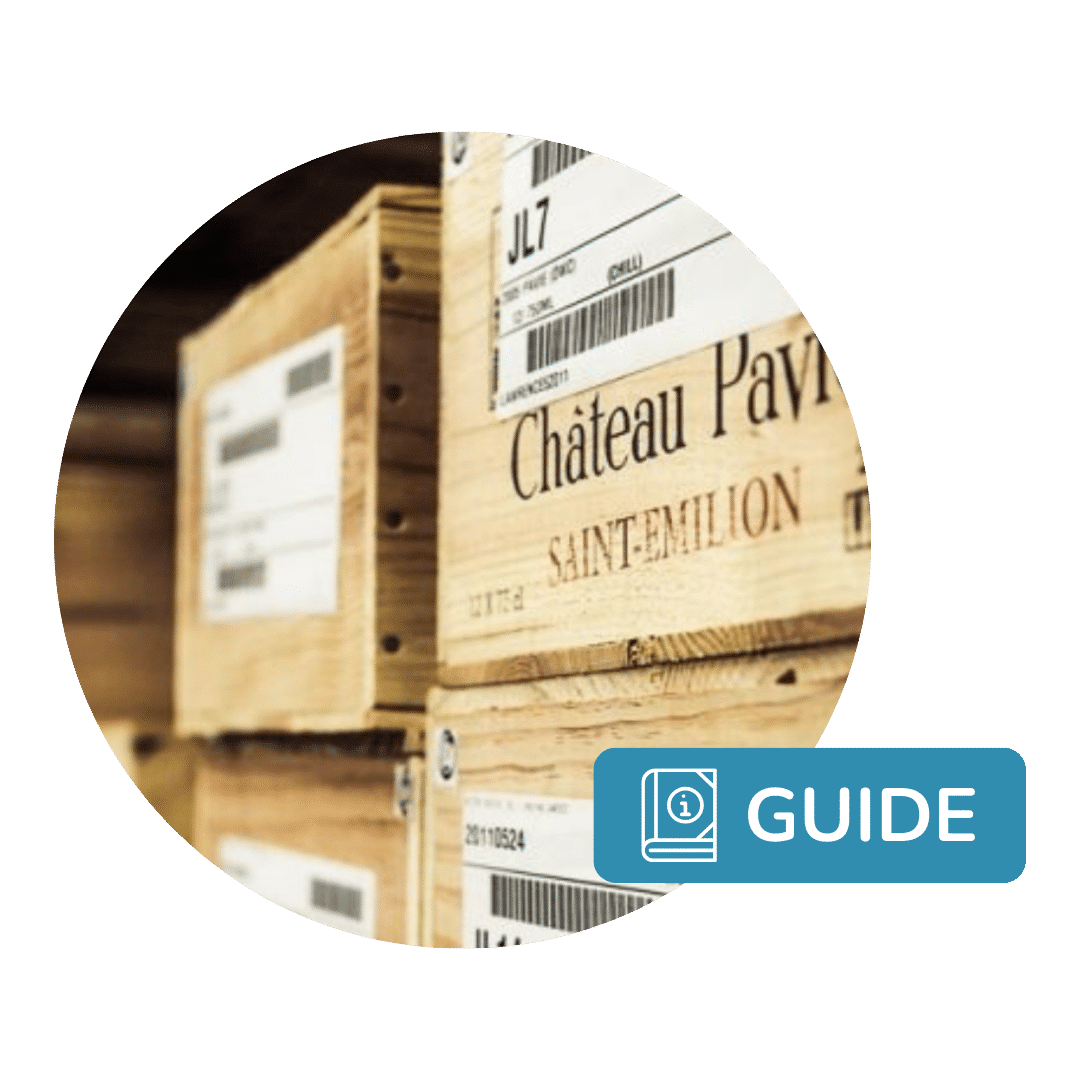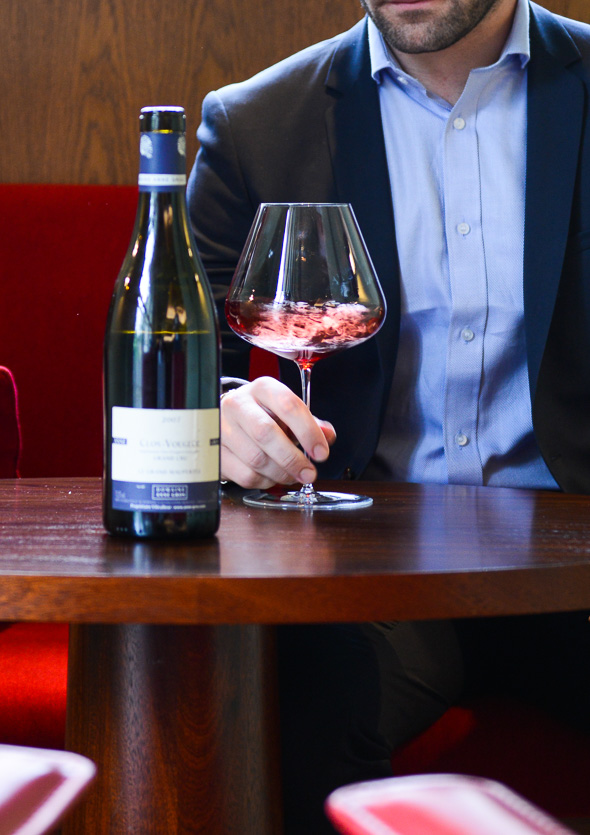Stockholding for fine wine businesses

A confluence of globalised demand, structural changes within the fine wine market, and the practical application of new technology, have shaped a range of new wine business stockholding models.
We explore the causes of change, the evolution of the various business models and their relative value.
A changing landscape
Gone are the days where all wine merchants adhere to the traditional stockholding model, where physical stock is bought to be sold or held in reserves until the wines approach their drinking windows.
Simon Farr, Co-Founder of Bibendum, Cru London and Nebbia e Luce explains, ‘The biggest thing that happened to fine wine over the last 40 years was that the rest of the world got rich. More wealthy individuals chose to consume and collect fine wine. Demand for fine wine increased. Supplies of the most sought-after wines didn’t. Scarcity drives up prices for in-demand wines. As the cost of wine rises, the pressure on working capital increases and drives a reduction in stock holding by the wine trade.’
These pressures have created a fragmentation of stockholders.
The days of a single dominant market maker have gone. It’s difficult in today’s market to create the big fine wine franchises of the past, as purchasing power of merchants reduces. Margins in high liquidity markets have fallen and that’s exerted pressure on costs.
There are, however, strategic approaches which can be applied to a mixture of stockholding models to support a thriving wine merchant business.
Let’s take a look at the stockholding archetypes that can define your business model and market differentiation.
- The low stock (virtual stock) holder
- The specialist stockholder
- The hybrid proposition-shaper
- The unconscious power broker
The low stockholder model
There’s a whole world that’s moving to low cost, low inventory models. Wine is no different. A low stockholder merchant or retailer doesn’t want to tie up precious working capital in wine, whether physical or as wine futures. The low stockholder wants to offer as many wines as possible and attract buyers who would otherwise find it hard to source the wines they want from local merchants or retailers.
In a perfect world the low stockholder needs accurate supplier feeds of inventory and efficient logistics.
The reality is a little different. Wine logistics and shipping is slow, and moving glass around comes with the risk of damage. Sources of supply are scattered across different geographies. Wine sourced internationally can come with different luggage tags and packaging, whilst the desire of some wine merchants to obscure sources can also obscure provenance. Then there’s the potential failure rate typically caused by poor (or no) systems within sources of supply.
Technology designed to accommodate virtual stock sources can help solve the reliability issues and makes differentiation, list updating and margin management much easier. Well planned logistics also helps to reduce the overall cost of shipping and movements, and critically builds an accurate picture of those fully loaded shipping costs upon which to base accurate margin calculations.
Technology also means that those extra pairs of hands needed to compensate for low volume, high value products aren’t required, or at least not to the same extent.
Working capital otherwise tied up in stock can now be spent on marketing and sales instead. A broad virtual stock model needs market reach to find a broader addressable market, for this model to be successful.
Liv-ex helps with a number of these challenges, because they do the heavy lifting in shipping wine, managing logistical risks and helping to manage buyer risk with their Standard in Bond stock designation. From nowhere else can you source as much virtual stock with the pricing transparency of comparing offer prices to last trades and using that data and other parameters to filter down to a manageable list.
A Liv-ex feed of virtual stock is a no-brainer for a retailer committed to the low stockholding model, but doesn’t automatically solve the immediate challenge of market differentiation. As you’ll see, the low stockholding business isn’t alone in needing to figure that out.

I’m a huge believer that with the implementation of technology, having access to everything and holding nothing, is absolutely the right model. By doing that we don’t have the balance sheet constraints where we need to buy things. For us it’s lean, it’s efficient, and we leverage technology to make sense of the best trading opportunities out there we can.
The power of stockholding
A stockholder can’t offer the range that a low stockholding model promises. They are limited by availability to source and available capital, and so appeal to a narrower addressable market with a more limited range of wines.
But stockholders do have some advantages over their uninvested competitors.
Stockholders can be much more efficient in their shipping costs given moving and storing wine is expensive and logistics is generally tricky. Certainty of stock availability means the failure rate is very low, and it’s easier to meet consistently high operating standards.
Margins in fine wine are initially constrained by competition and suggested release pricing, especially in those markets where the product is widely distributed, such as releases out of the Bordeaux Place. However patience rewards the stockholder as value starts to rise when stocks of widely available vintages sell through, and the supply and demand dynamic shifts in favour of those businesses holding a stock position.
The nature of being a stockholder has changed in the last 30 years as a consequence of market transparency and higher prices. A stockholder needs better market insight and a clear sense of which stocks are worth buying into.

Back to Simon Farr, who answers, ‘how do you carve out a competitive advantage as a stockholder?’
“The edge is having a slow wine approach. To do that you need patient capital. I look at a 3-5 year holding period so that trade quantities of pristine stock can be offered at a more mature part of the life cycle”.
“Building a franchise with a clear position is key here. You have to find something that you can do better than someone else. Then you back your judgement and take positions in wines and categories that you believe in.”
Specialisation is perhaps increasingly important in 2023 with the return of inflation since the cost of money is greater, and any deployment of working capital needs to comfortably beat cash returns for trading to be worthwhile.

My business is all about buying well, about building stock. It’s about creating a position of power with your stock holding so that you are buying the best wines that you can possibly buy at the best prices you possibly can and that is difficult to do if you haven’t got the right inventory management system.
The hybrid proposition-shaper
In practice more of the fine wine market is moving to a blended model to benefit from the value that each model can deliver.
This approach optimises use of working capital, fuels business growth and provides choice to clients, especially where next day delivery isn’t a priority.
Fit-for-purpose technology to support the hybrid model is essential, to differentiate stock ownership, to determine what goes into the balance sheet and what doesn’t, to systemise the ordering process through back to back generation of supplier purchase orders triggered by the raising of sales orders, and to manage delivery estimates and supply chain.
Are collectors unconscious power brokers?

Against the backdrop of a move to low margin/ low stockholding on the one hand, increasing specialisation among stockholders on the other, and rising bank rates, the question has to be asked: are collectors in a stronger position than they realise to fill the stockholding inventory gap?
The last 20 years’ economics have been favourable to collectors. The cost of capital has been low and a great deal of investor money is looking for a home with a purpose and a stable return.
Individually, top collectors hold more stock than most merchants. There are a lot more large collections than you might imagine. Collectors buy more wine than they consume, so their collections mature, at which point the opportunity presents to become providers of virtual stock.
Of course a substantial part of the secondary market is already represented by the consignment or broking of collector wines held in storage. We know of at least one, once-dominant, stockholder merchant who buys very little these days, because they have so much client stored wine that they’re able to leverage.
However as the low cost, low inventory model develops, and as the two archetypes begin to break down into a blend of sourcing strategies in the search for market differentiation, the collector-stockholder could end up with rather more market power than they realise.
Will collectors be the salt and pepper of virtual inventories, providing mature stocks and interest by which differentiation can be achieved?
Industry-specific technology is key to success
Regardless of the business model, the anchor to facilitate success is industry-specific software, built to systematically support these models through the use of multi-threaded inventory management, flexible workflow management and market connectivity.
Wine Hub client James Sowden, operator of Cavendish Wine, is firmly in the camp of there being power in stockholding if you have the technology to support your stock buying and selling strategy. “My business is all about buying well, about building stock. It’s about creating a position of power with your stock holding so that you are buying the best wines that you can possibly buy at the best prices you possibly can and that is difficult to do if you haven’t got the right inventory management system.” James further elaborates, “Having a huge amount of stock meant needing a system that could enable us to manage our purchase orders, sales orders, inventory management and warehouse communication as easily as possible.”
For Stuart Dale, operating a virtual stock model is what Crop & Vine is all about. “The idea of creating a high-tech, high-touch model (a phrase coined from the financial world) and the ultimate brokerage model is what we really wanted to achieve. We’re using technology to make sense of this leviathan of information and data, understand the market, give our clients the tools to be able to make sensible buying decisions and present them with unbiased buying opportunities. We wanted something that was essentially a one-stop-shop for all of our supplier and client stock management, inventory management and invoicing.”